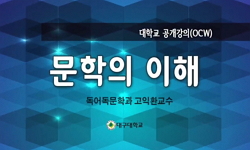횡구식석곽에 대한 기왕의 연구사를 면밀하게 검토하고 그에 대한 문제점을 인식하는 것으로 논문을 시작하였다. 먼저 횡구식석곽이라는 용어 자체에 대한 검토에서 개념상 전혀 문제가 없...
http://chineseinput.net/에서 pinyin(병음)방식으로 중국어를 변환할 수 있습니다.
변환된 중국어를 복사하여 사용하시면 됩니다.
- 中文 을 입력하시려면 zhongwen을 입력하시고 space를누르시면됩니다.
- 北京 을 입력하시려면 beijing을 입력하시고 space를 누르시면 됩니다.
일본 고분시대 횡구식석곽(橫口式石槨)의 형식학적 연구 = A Study of the Stone Chamber Tomb Types in the Kinai Area of Japan
한글로보기https://www.riss.kr/link?id=A109462839
- 저자
- 발행기관
- 학술지명
- 권호사항
-
발행연도
2015
-
작성언어
-
-
주제어
횡구식석곽 ; 형식분류 ; 河內지역 ; 大和지역 ; 7세기 ; stone-chamber tomb ; classification type ; Kawachi area ; Yamato area ; seventh century
-
KDC
800
-
자료형태
학술저널
-
수록면
157-197(41쪽)
- 제공처
-
0
상세조회 -
0
다운로드
부가정보
국문 초록 (Abstract)
횡구식석곽에 대한 기왕의 연구사를 면밀하게 검토하고 그에 대한 문제점을 인식하는 것으로 논문을 시작하였다. 먼저 횡구식석곽이라는 용어 자체에 대한 검토에서 개념상 전혀 문제가 없는 것은아니지만, 독특한 형태를 강조하고 시공간적인 의미를 내포하고 있는 용어로 그대로 사용하여도 좋다고 결론 내렸다. 그리고 횡구식석곽의 규정에도 저석의 유무, 단장 등 여러 견해가 제시되었으나 역시 기본적으로는 전실, 연도보다 규모가 작고, 관을 매납하기 위한 곽의 기능을 염두에 둔 것을 횡구식석곽이라 정의하였다. 이러한 횡구식석곽의 분류에 있어 가장 중요한 것은 역시 평면형태로 전실과 연도의상관관계를 기준으로 Ⅰ류와 Ⅱ류, Ⅲ류로 분류하였다. 그리고 다시 Ⅰ류는 석곽부와 전실과의 규모 차이를 기준으로 ⅠA형식과 ⅠB형식으로 분류하고, Ⅱ류와 Ⅲ류는 석곽부축조방식에 따라 각각 ⅡA형식과 ⅡB형식, 그리고 ⅢA형식과 ⅢB형식으로 나누었다. 이 형식들에 대해 출토토기와 형식학적 관점에서 6세기 말에서 7세기 말에 이르기까지각 형식별로 연대를 비정하였다. 기왕의 견해에는 이 형식들이 석관계와 석실계 등, 각기 다른 계보관계를 가지는 것으로 인식하는 경향이 있었으나 シシヨツカ古墳을 시작으로 자체적으로 영향을 받고 형식변화하는 것으로, 같은 계보관계 속에 있는 것으로 상정하였다. 마지막으로 횡구식석곽이 각 시기별로 어떻게 분포하는지 그 양상에 대해 파악하였다. 6세기 말에서 7세기 전엽에 해당하는 1기에는 ⅠA형식의 횡구식석곽이 처음으로 출현하고 이에 영향을 받아 ⅠB형식의 횡구식석곽이 축조된다. 그리고 河內지역에 집중 분포하는것을 확인하였다. 2기는 7세기 중엽에 해당하는 시기로 1기에 이어 ⅠB형식이 축조되면서도 ⅡA형식과 ⅡB형식이 이 시기에 집중적으로 축조된다. 그 분포지역은 이전 중심지역이 河內지역을 비롯해 야마토지역으로 확대되며, 일부 서일본지역에서도 축조되는 것으로 파악하였다. 3기에는 이전과 달리 거의 완전하게 석곽화가 이루어진 ⅢA형식과 ⅢB형식이축조되고, 중심 분포지역도 河內에서 야마토로 이동하는 것으로 보았다.
다국어 초록 (Multilingual Abstract)
This research examines stone chamber tombs, which were built as memorials. It begins with a review of previous research on such structures and concludes by stating that the term stone-chamber tomb refers to a unique type of memorial according to how a...
This research examines stone chamber tombs, which were built as memorials. It begins with a review of previous research on such structures and concludes by stating that the term stone-chamber tomb refers to a unique type of memorial according to how and when it was constructed. A stone-chamber tomb had a burial chamber of a smaller scale than its passage and functioned as a grave for burying a corpse. The tombs can be categorized in accordance with flat-panel format types. Grave forms are categorized as types Ⅰ, Ⅱ and Ⅲ based on the correlation of the aisle. The tombs were excavated relics from the late seventh century; therefore, they took their perspective and form from the late sixth century.シ シ ヨ ツ カTomb was influenced by changes in the mound format, which is assumed to be from the same lineage. Finally, the cross-fashioned seokgwak shows aspects regarding each period. During the late sixth century to the early seventh century, the first ⅠA-type stone chamber tomb emerged, under the influence of the transverse seokgwak ⅠB-type. In the mid-seventh century, ⅠB-type tombs were built, as well as ⅡA- and ⅡB-types. Prior to the late seventh century, the tombs took on a different format, ⅢA- and Ⅲ-B type structures, and the central distribution area was moved to Yamato in the Kawachi area.
동일학술지(권/호) 다른 논문
-
- 고려대학교 글로벌일본연구원
- 서동주 ( Dong Ju Seo )
- 2015
-
完了を表す複合動詞後項に關する一考察 -「~上げる」「~拔く」「~通す」を中心に-
- 고려대학교 글로벌일본연구원
- 白以然 ( Yi Yun Baek )
- 2015
-
- 고려대학교 글로벌일본연구원
- 백혜영 ( Hye Yeong Baek )
- 2015
-
明治(명치) 신정부의 에조치(蝦夷地) 개척과 木戶孝允(목호효윤)
- 고려대학교 글로벌일본연구원
- 심기재 ( Gi Jae Shim )
- 2015




 KISS
KISS


